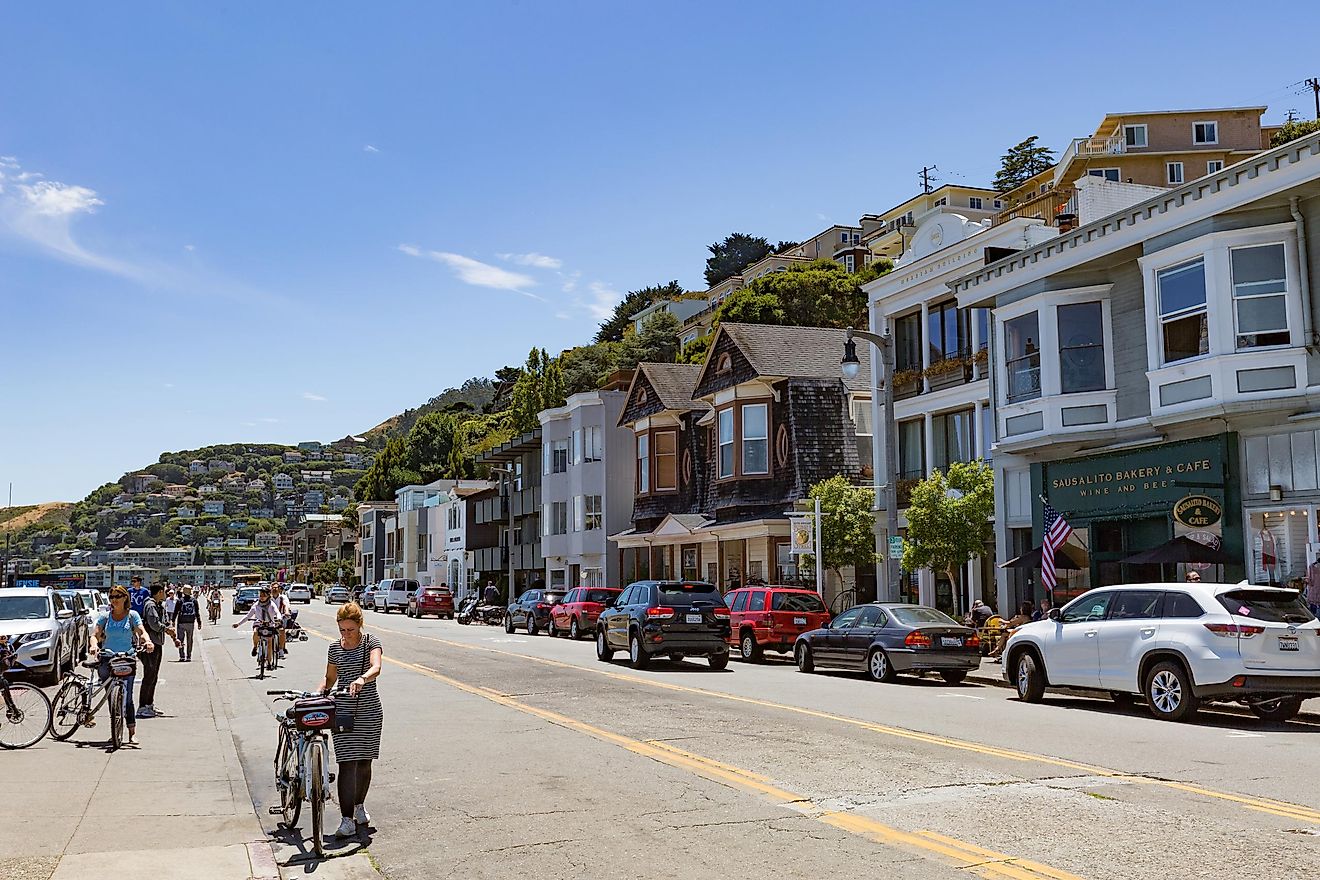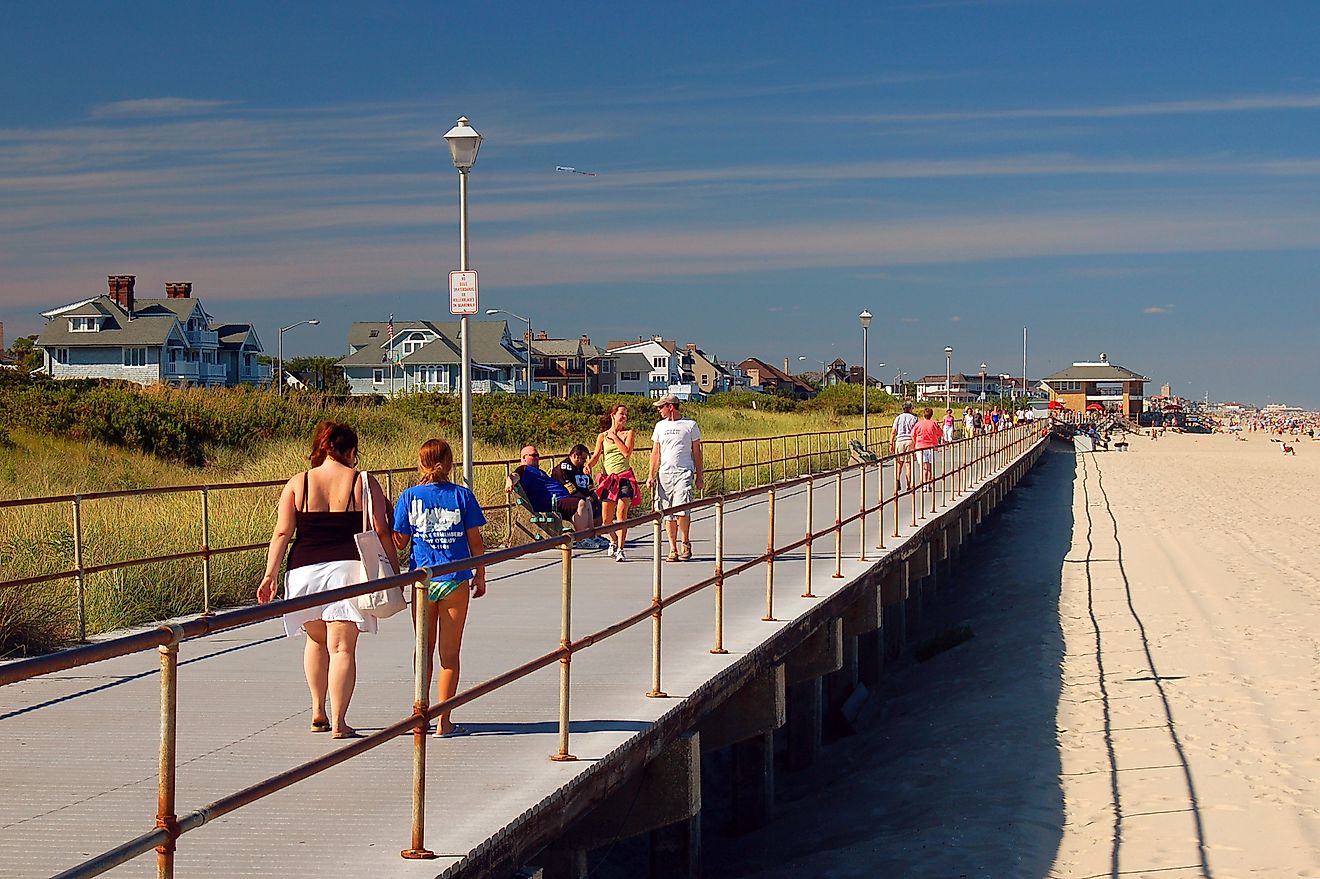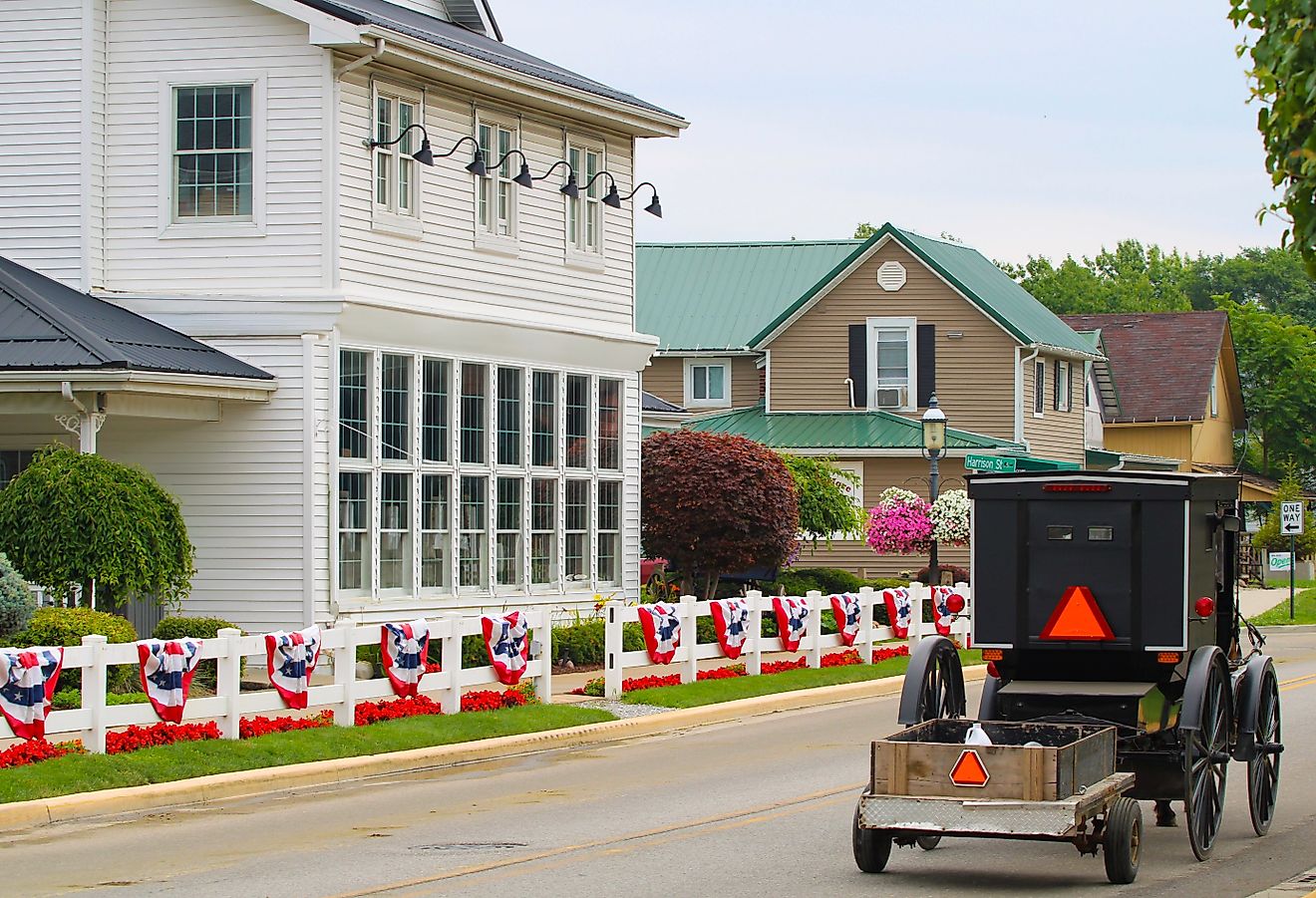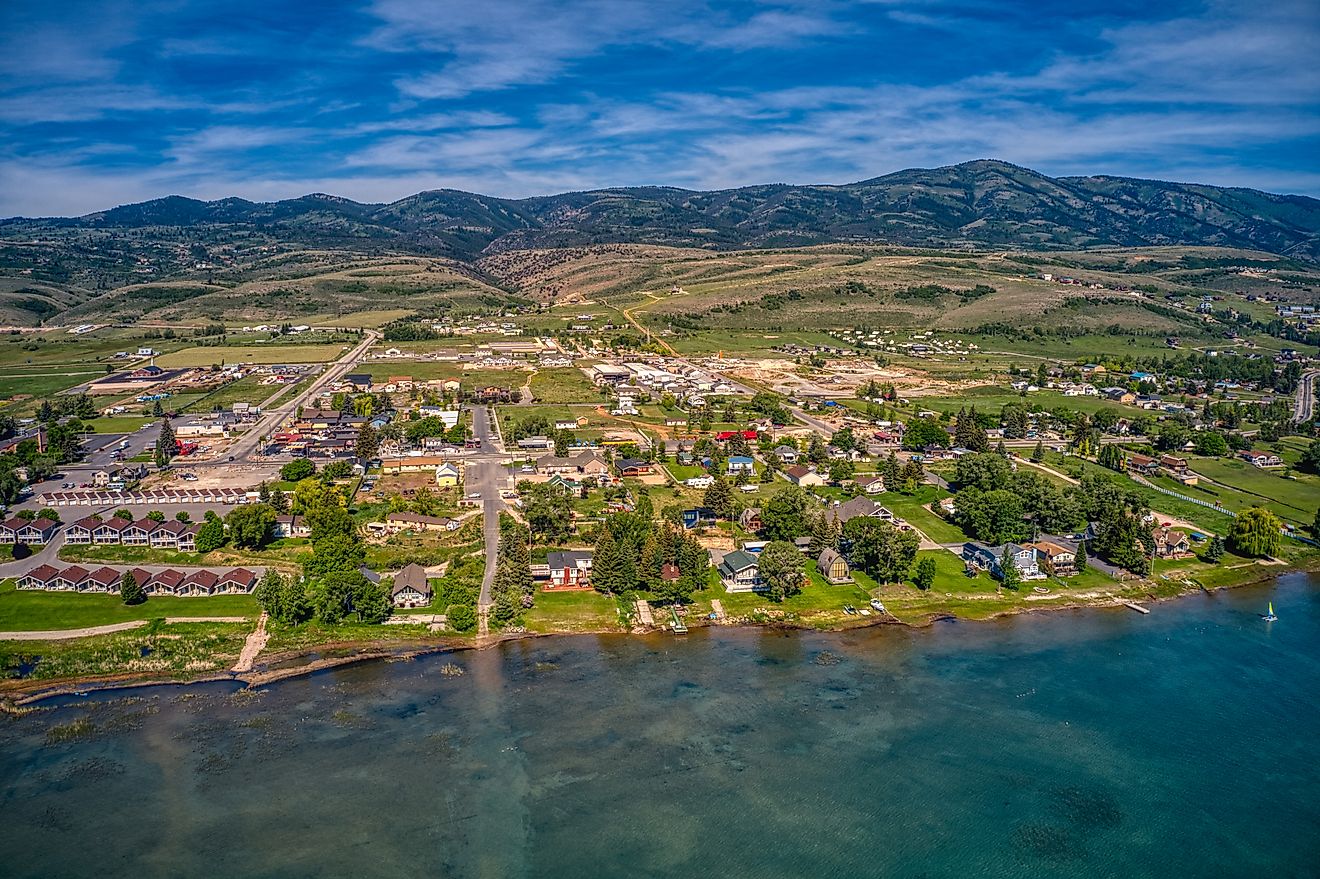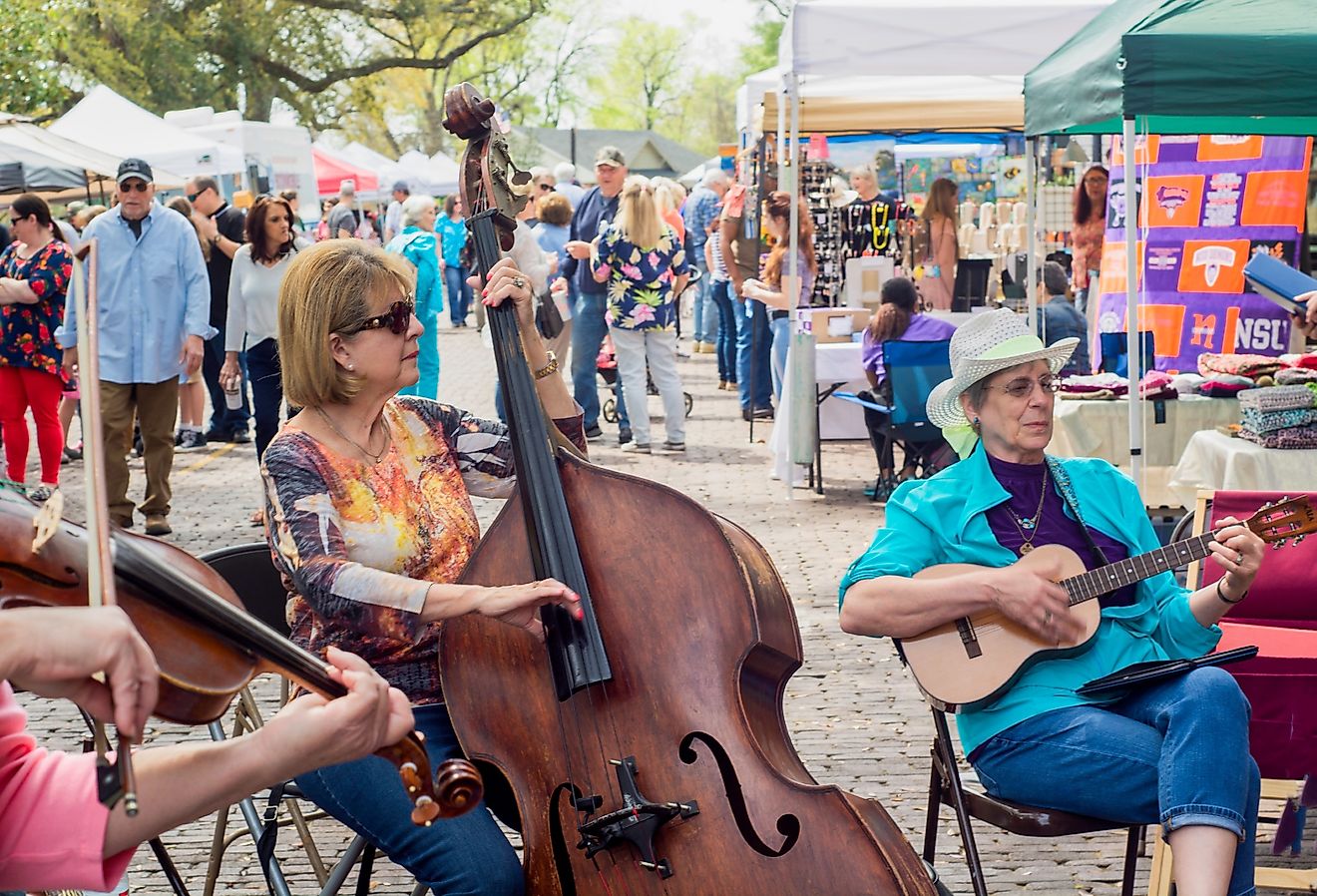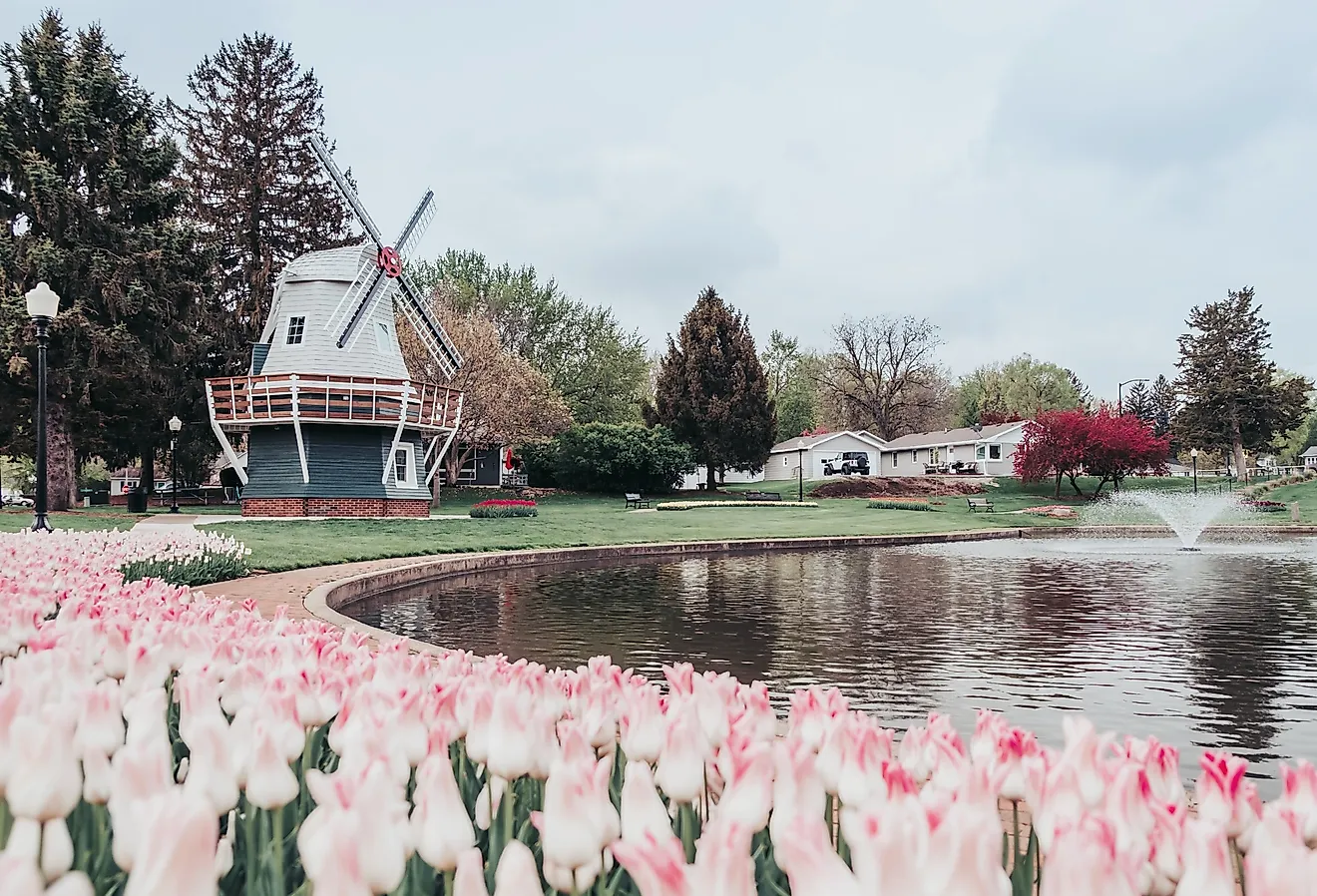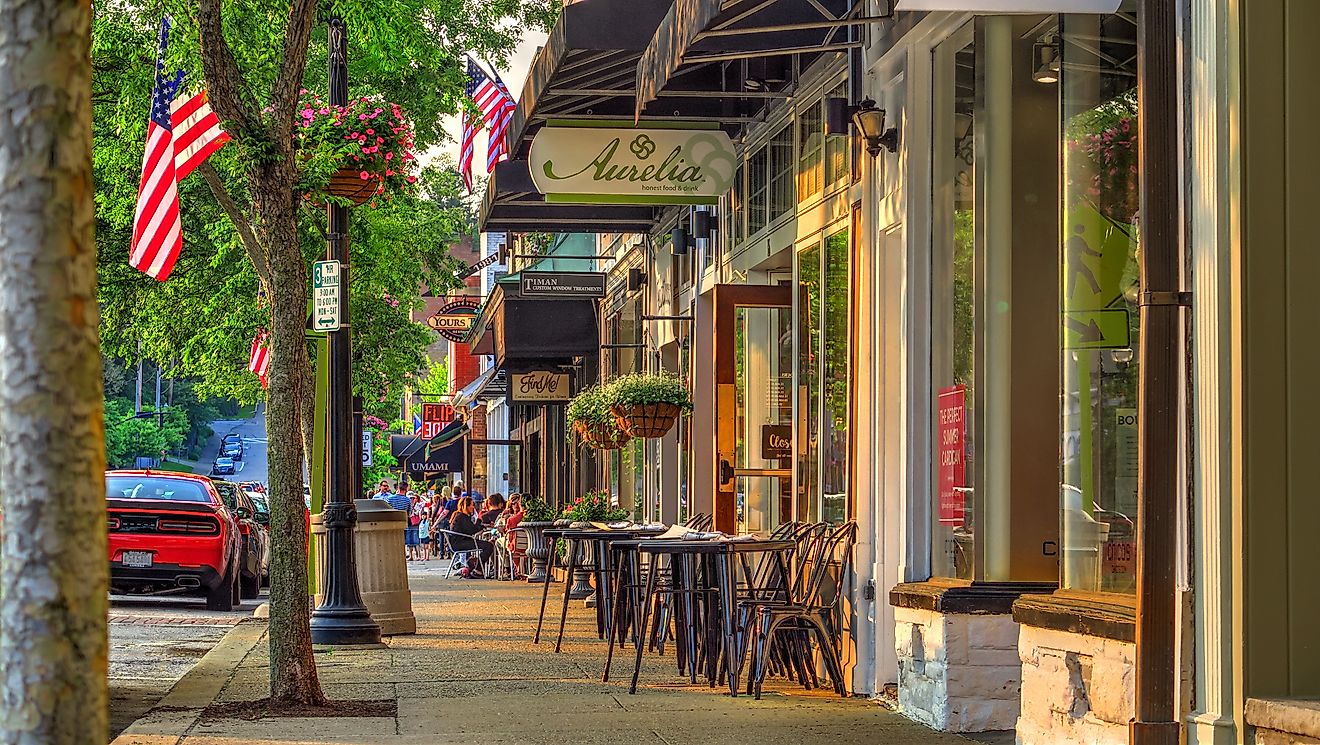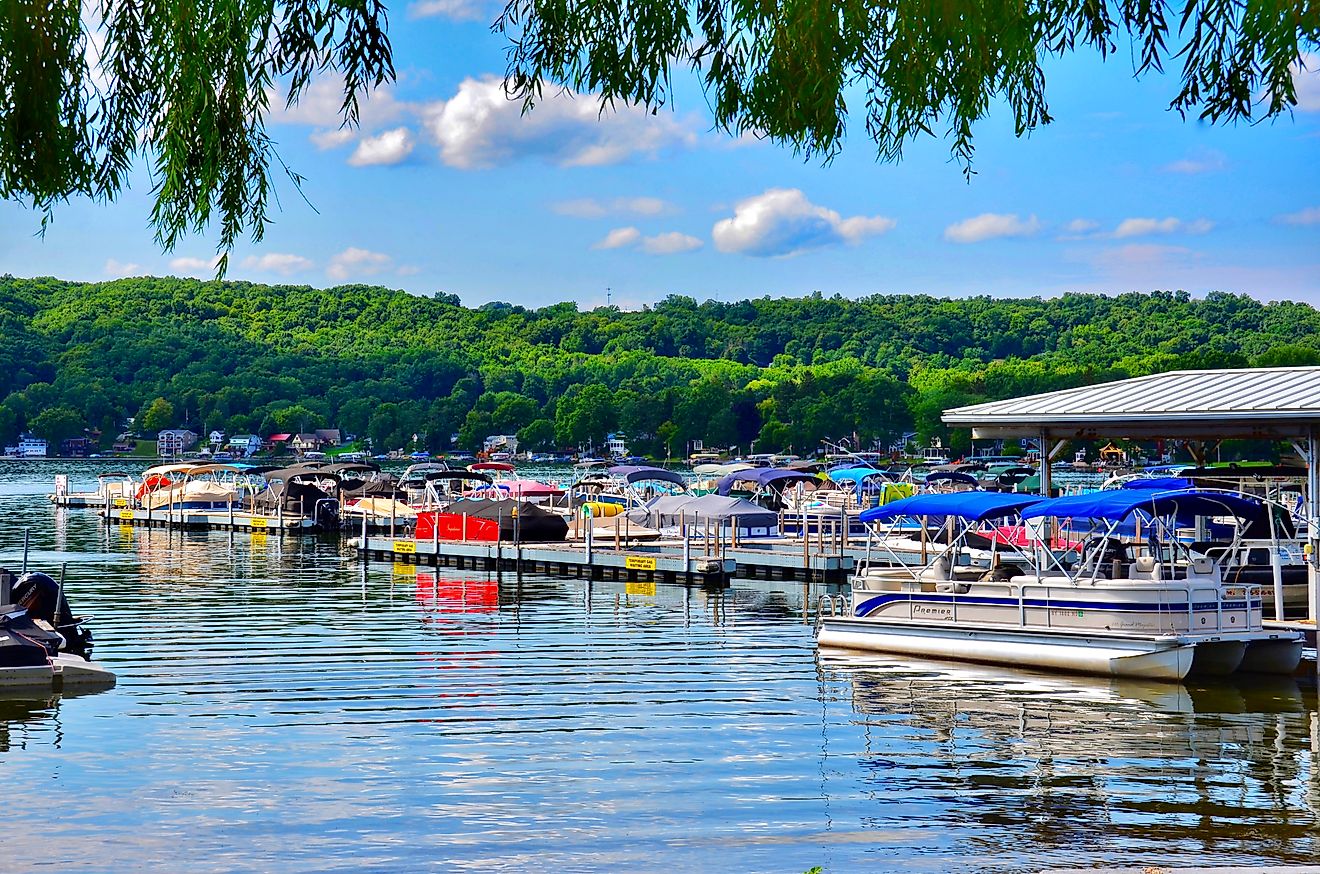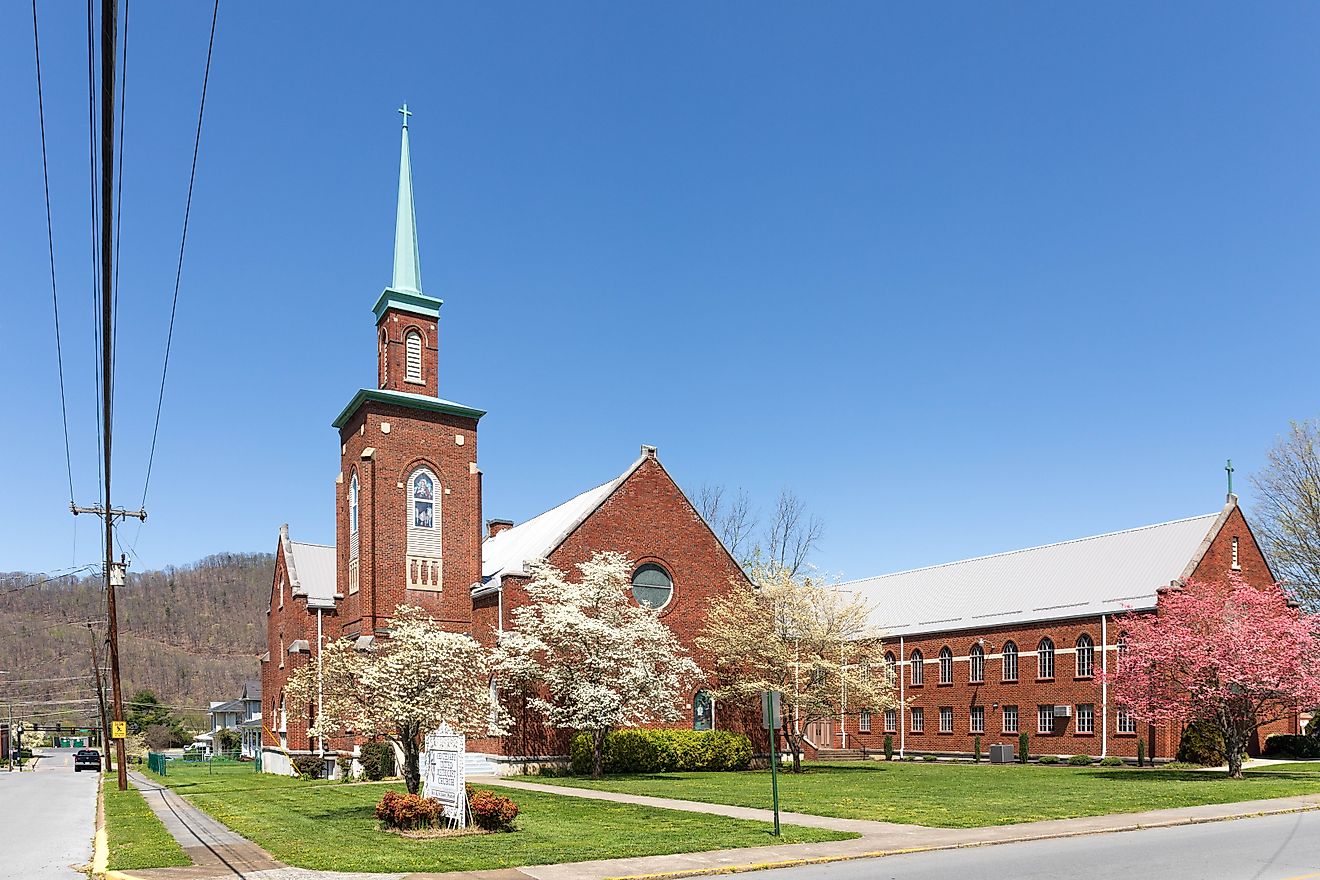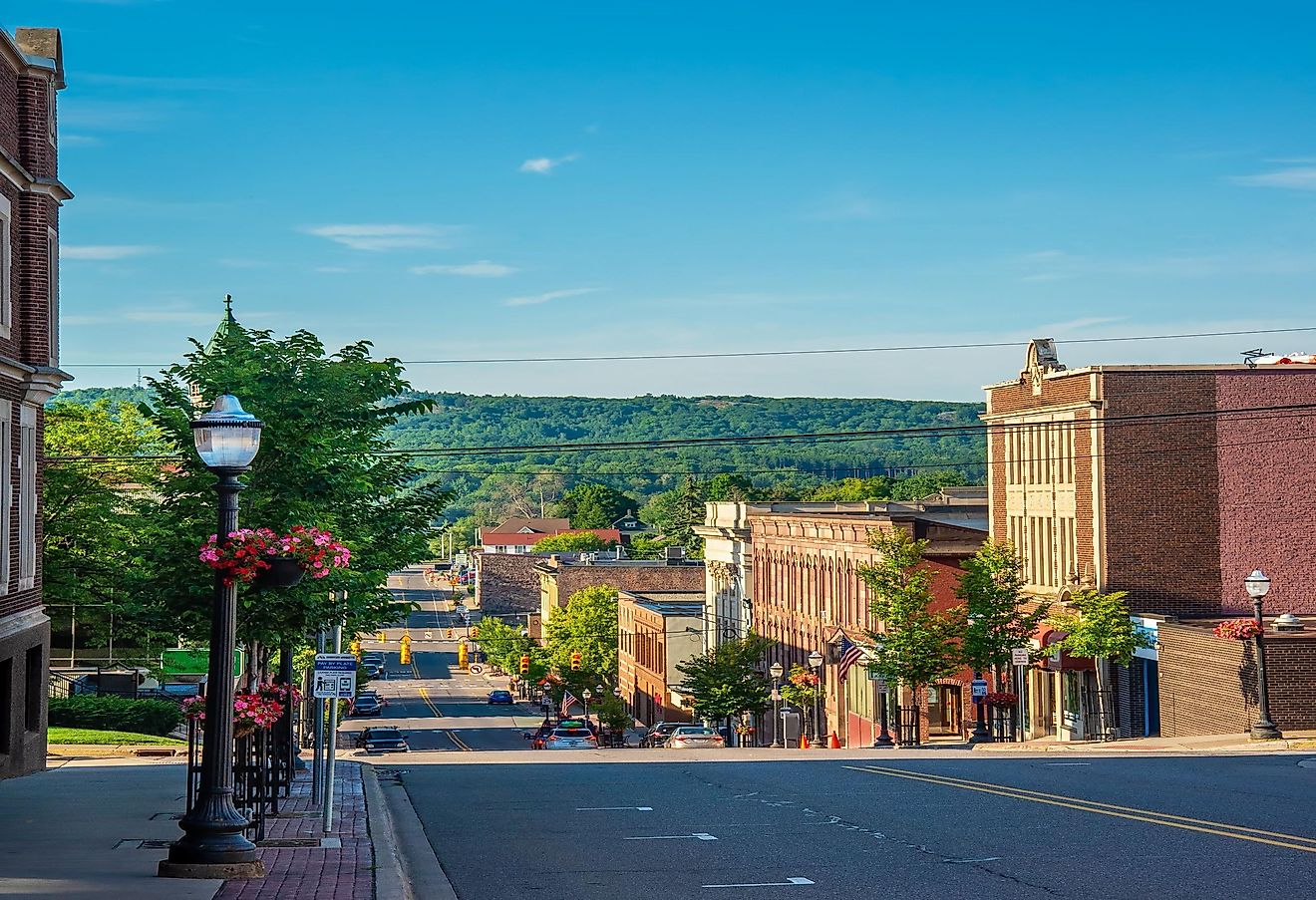
13 Prettiest Towns In The Colorado Plateau
Surrounded by major mountain ranges such as the Great Basin and the Rocky Mountains, the Colorado Plateau is a ‘physiographic region’ of the Intermontane Plateaus, anchored on the Southwestern United States’s Four Corners region. Covering an area of 130,000 sq. mi, the Colorado Plateau Province includes a considerable portion of northwestern New Mexico, the northern half of Arizona, the western and southwestern parts of Colorado, and the southern and eastern portions of Utah. Defined by splendid red rock landscapes, slot canyons, ancient volcanic mountains, sunken deserts, and dispersed forest areas, the Colorado Plateau Province boasts uncountable pretty small towns that serve as delightful escapes away from the hustle and bustle of urban metropolises.
Moab, Utah

The administrative center of east-central Utah’s Grand County, Moab, is a picturesque town situated just south of the Colorado River on the western flanks of the 12,721-foot-high La Sal Mountains within the heart of the Colorado Plateau. Renowned for its awe-inspiring landscapes and as a gateway to the iconic Arches and Canyonlands National Parks, Moab is a well-known base for mountain bikers exploring the town’s abundant hiking, off-roading, and biking trails. One can also raft down the rapids of the Colorado River, hike up to the plunging falls on Mill Creek Trail, drive along the spectacular Upper Colorado River Scenic Byway U-128, or take a dip in Ken’s Lake after a hectic day of exploration. Spend some time browsing the many unique shops, galleries, museums, trendy cafes, breweries, and diners that line the Main Street, besides enjoying the town’s several annual events like the Moab Music Festival, Skinny Tire Festival, LGBT Pride Festival, and Moab Folk Festival.
Durango, Colorado

A frontier mining town founded in 1880 by the Denver & Rio Grande Western Railroad, Durango is a home-rule municipality situated in the lush Animas River Valley at the base of the La Plata Mountains. Being the seat of Southwestern Colorado’s La Plata County, vacationers visiting Durango must stroll the downtown Main Avenue Historic District, which includes several landmark structures besides galleries, brewpubs, boutiques, coffee shops, diners, and other businesses. Take a ride on the heritage Durango & Silverton Narrow Gauge Railroad that runs on a 45.2-mile track winding through forests, mountains, and abandoned mines, linking Durango with Silverton. A favored year-round tourist destination, some of the town’s other places of interest include the Mesa Verde National Park, San Juan National Forest, the San Juan Skyway, Animas River Trail, Colorado Trail, Purgatory Ski Resort, Southern Ute Tourist Center, and Durango Wildlife Museum & Fish Hatchery. Durango hosts yearly events like the Sundown Festival, Iron Horse Bicycle Classic, Durango Ragtime & Early Jazz Festival.
Gallup, New Mexico

Often called the “Indian Capital of the World” for its location at the heart of several Native American reservations, Gallup, the seat of Northwestern New Mexico’s McKinley County, is placed midway between Albuquerque, New Mexico, and Flagstaff, Arizona, along the U.S. Highway 66. Initially established as a railhead for the Atlantic and Pacific Railroad in 1881 and named after the railroad’s paymaster David L. Gallup, the town flawlessly amalgamates authentic Native American art & cultures with exciting outdoor activities. Gallup houses the country’s biggest wholesale Native American art business sector, with various tribes producing more than 70% of the world’s Native American jewelry, rugs, pottery, basket weaving, sculptures, textiles, and paintings. In addition to many notable buildings, trading posts, hotels, shops, galleries, museums like the Navajo Code Talkers Museum, and restaurants offering fusion cuisines, the downtown has dozens of colorful murals that the region’s history and cultures have greatly influenced. Do participate in the town’s many yearly celebrations like the Gallup Inter-Tribal Indian Ceremonial, Second Street Arts Festival, Gallup Native Arts Market, Nightly Indian Dances, Wild Thing Championship Bull Riding event, Lions Club Rodeo, and Red Rock Balloon Rally.
Sedona, Arizona

This charming small town is located within the Coconino National Forest between the Yavapai and Coconino counties in Northern Arizona’s Verde Valley region. Named after Sedona Schnebly, the spouse of the town’s first postmaster, Sedona boasts an array of breathtaking red sandstone formations that create a dreamlike landscape against the blue sky. Surrounded by acres of gorgeous forests, Sedona invites adventurists who want to discover its innumerable hiking, biking, and off-roading trails. Wine connoisseurs can travel to the local vineyards to savor some of the finest wines amidst extraordinary landscapes. Every year, Sedona draws thousands of merrymakers to take part in various festivals like the St. Patrick’s Parade & Festival, Sedona Food Truck Festival, 1st Friday In The Galleries, Sedona Hummingbird Festival, and Sedona International Film Festival & Workshop.
Bluff, Utah

Christened after the nearby sandstone bluffs, this little community is located on the northern boundary of the San Juan River Valley in southeastern Utah’s San Juan County. Founded in April 1880 as a farming community by Mormon pioneers during their famed “Hole in the Rock” expedition to establish a mission in the Four Corners Area, Bluff is acclaimed for its rich human and natural history. Being a central point along the “Trail of the Ancients National Scenic Byway,” Bluff provides easy access to many noteworthy attractions such as Monument Valley, Valley of the Gods, Goosenecks State Park, Bears Ears National Monument, Natural Bridges National Monument, and Hovenweep National Monument. History lovers must visit the Bluff Fort and the beautiful restored Victorian-era homes in the Bluff Historic District to learn about early pioneer life and marvel at the stunning petroglyphs displayed at Sand Island. The Bluff International Balloon Festival, Bluff Arts Festival, Utah Navajo Fair, and the Bears Ears Marathon are some of the town’s famous annual events.
Jemez Springs, New Mexico

Jemez Springs is a serene village located in Northern New Mexico’s Sandoval County on the banks of the Jemez River in the beautiful red-rock San Diego Canyon, completely encircled by the 1.6-million-acre Santa Fe National Forest. The curative mineral waters of Jemez Springs’ natural hot springs, like the San Antonio Hot Springs, McCauley Hot Springs, Spence Hot Springs, etc., have drawn tourists here for ages, leading to the development of the town’s many retreat centers. A visit to the adjoining Valles Caldera National Preserve is a must for the scenic drive along the Jemez Mountain Trail National Scenic Byway, as are the other attractions like the Pueblo of Jemez Welcome Center, Jemez Historic Site, Soda Dam, Battleship Rock, Jemez National Recreation Area, Jemez Fine Art Gallery, and the Jemez Artisans Co-Op Gallery.
Mancos, Colorado

Nicknamed the “Gateway to Mesa Verde,” this tranquil mountain town in Southwestern Colorado’s Montezuma County is situated in the Mancos River Valley between Cortez and Durango on U.S. Route 160. Ringed by mountains and rangelands, this commercial center of East Montezuma County is celebrated for its closeness to a variety of outdoor attractions, including the Mesa Verde National Park, Four Corners Monument, Mancos State Park, Jackson Gulch Reservoir, and Chicken Creek Cross-country Ski Area. In recent years, Mancos has been transformed into an art colony, with the Mancos Creative District spanning several blocks of the downtown. The downtown business district has old buildings, shops, art galleries, top-notch restaurants, coffee houses, bakeries, and the Columbine Bar & Grill, one of Colorado’s oldest continuously operating bars. Various special events like Mancos Bloom, Mancos Farmers Market, Burrofest, Mancos Days, and Mancos Valley Summer Brewfest are held annually in the statutory town.
Kanab, Utah

Kanab, the seat of Kane County, is at the base of Vermilion Cliffs along the Kanab Creek on the western Colorado Plateau. Encircled by the towering Navajo sandstone cliffs and vast expanses of rugged desert, this tiny town is perfectly set in the “Grand Circle” area, centrally among Vermilion Cliffs National Monument, Pipe Spring National Monument, Monument Valley Navajo Tribal Park, Bryce Canyon National Park, Zion National Park, North Rim of Grand Canyon National Park, and Lake Powell. In fact, Kanab is an ideal home base for discovering these famous sites, besides museums like the Kanab Heritage House Museum and Little Hollywood Land Museum, and other adjacent attractions like the Grand Staircase-Escalante National Monument, Moqui Cave, Best Friends Animal Society, and Coral Pink Sand Dunes State Park. Kanab’s scenery has lured numerous filmmakers, and over the years, many abandoned film sets have become prominent tourist attractions aptly upholding Kanab’s nickname, “Utah’s Little Hollywood.” Moreover, the town features diverse dining establishments like Rocking V Café, Wild Thyme Café, Peekaboo Canyon Wood Fired Kitchen, Sego Restaurant, and Kanab Creek Bakery.
Telluride, Colorado

San Miguel County’s most populous town and administrative center, Telluride, is situated in an isolated spot on the western flanks of the San Juan Mountains at an altitude of 8,750 ft in Southwest Colorado. An erstwhile silver mining camp on the San Miguel River, this artsy mountain town offers plenty of outdoor activities like mountain biking, hiking, golfing, river rafting, trout fishing, camping, rock climbing, cross-country skiing, and ATVing in the winter and summer months. A significant portion of the town’s developed area forms a part of the Nationally-Registered Telluride Historic District, which includes meticulously maintained elegant Victorian-era homes with late boom-town architecture lining Colorado Street, Telluride’s principal commercial avenue. Downtown Telluride also houses countless independently owned shops, art galleries, hotels, bookstores, boutiques, museums like the Telluride Historical Museum, and gourmet restaurants like the Butcher & Baker Café, 221 South Oak, New Sheridan Hotel, and the Smuggler Union Restaurant & Brewery. Travelers visiting the town can also enjoy many events like the farmers' market, Telluride Film Festival, Telluride Yoga Festival, and Hot Air Balloon Festival.
Lupton, Arizona

Placed right on the New Mexico-Arizona boundary, Lupton is a tiny village along Interstate 40 Highway in Arizona’s Apache County, about 21 miles southwest of Gallup. Established by trainmaster George William Lupton in 1905, Lupton is well-known for the incredible Painted Cliffs that have been welcoming motorists on Route 66 for several decades. Currently, home to only 25 inhabitants, many travelers who pass through this town stop to take a break at the Painted Cliffs Rest Area or browse the kitschy shops at the base of the cliffs that sell Indian gewgaws, shot glasses, postcards, and souvenirs to tourists.
Gunnison, Colorado

Locally known as “Gunny,” Gunnison is a home-rule municipality in Colorado’s Gunnison County, named after Captain John Williams Gunnison, the area’s first-known European-American explorer. Situated along the Gunnison River between the Sawatch Range and Elk Mountains, Gunnison, besides being home to the Western State Colorado University, offers a wealth of outdoor activities against a backdrop of the stunning Rocky Mountains. Visitors can hike at the Black Canyon of Gunnison National Park, Curecanti National Recreation Area, McIntosh State Wildlife Area, Sapinero State Wildlife Area, and Tomichi State Wildlife Area, all located within a short distance from the town. One can also visit the Gunnison Valley Observatory, enjoy a wide range of activities at the Crested Butte Mountain Resort, discover the bike trails at Hartman Rocks recreation area, ski the trails on Monarch Mountain, fish at the nearby reservoirs, experience the thrill of whitewater at Taylor Park, learn about the region’s history at the Gunnison Pioneer Museum, and relax at the Jorgensen Park.
Williams, Arizona
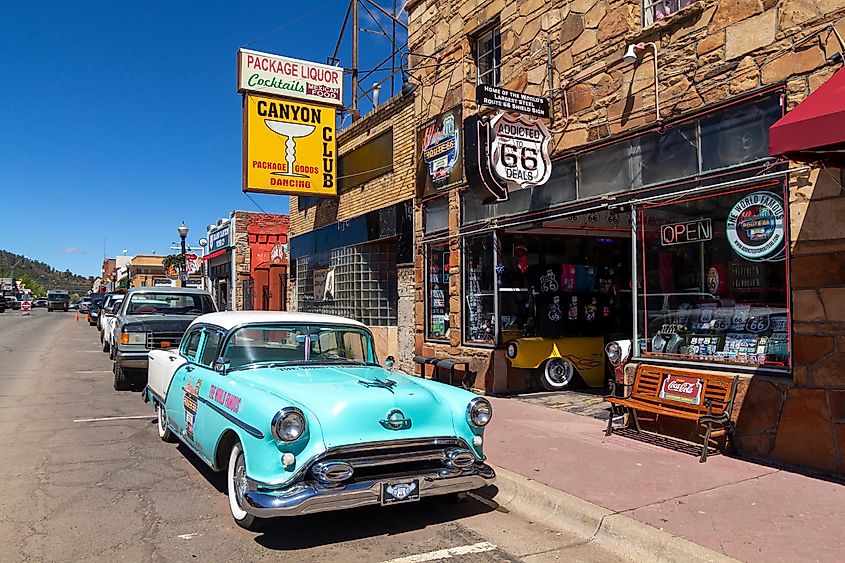
An attractive Old West town in Arizona’s Coconino County, Williams has been dubbed the “Gateway to the Grand Canyon” due to its location just 60 miles from the Grand Canyon’s southern rim. Named after the famous mountain man, “Old Bill Williams,” Williams was one of the last U.S. Route 66 communities bypassed by Interstate 40 in 1984. Initially founded as a ranching, lumber, and railroad center, Williams currently boasts a thriving historic business district featuring many late 19th and early 20th-century buildings in different architectural styles. Best known for being the southern terminus of the Grand Canyon Railway, travelers visiting Williams must ride on this heritage railroad that passes through scenic landscapes of Arizona’s High Country on its way to the Grand Canyon Village Historic District. Moreover, the numerous gift shops, motels, restaurants, and the small Pete’s Gas Station Museum, packed with classic cars and old memorabilia, cater to tourists searching for an authentic Route 66 vibe. Also, do not miss any opportunity to visit the Bearizona Wildlife Park, Grand Canyon Deer Farm, the surrounding Kaibab National Forest, and Bill Williams Mountain area, which offers unlimited outdoor recreational activities.
Taos, New Mexico

Taos County’s seat of government, Taos, is situated in New Mexico’s north-central region in the Sangre de Cristo Mountains, about 55 miles north-northeast of Santa Fe. This principal town of the Taos Micropolitan Statistical Area draws thousands of tourists for its rugged beauty, the flowing Rio Grande River, breathtaking vistas, and a perfect mix of different cultures. Some of Taos’s must-visit points of interest include the Taos Pueblo, Rio Grande Gorge Bridge, Eanger Irving Couse House & Studio, Our Lady of Guadalupe Parish, San Francisco de Asis Church, Governor Bent House, Taos Art Museum & Fechin House, Harwood Museum of Art, Millicent Rogers Museum, and Taos Center for the Arts. Situated to the northeast of the town, the world-class Taos Ski Valley alpine resort offers winter athletes vertical runs down the Sangre de Cristo Mountains. Throughout the year, the town hosts various celebrations like the Taos Winter Wine Festival, Taos Lilac Festival, Taos Solar Music Festival, Fiestas de Taos, Taos Fall Arts Festival, Taos Mountain Balloon Rally, and Yuletide in Taos.
From the diverse outdoor adventures in Moab to the artistic ambiance of Sedona, each town in the Colorado Plateau has a distinctive allure that draws tourists from all over the globe. These adorable locales are where awe-inspiring natural beauty, rich heritage, vibrant Native American cultures, attractions along Route 66, and outdoor recreations converge to create unforgettable memories. So, whether you want to survey astounding rock formations, observe ancient pueblos, or soak in hot springs, these amazing Colorado Plateau towns are worth adding to your itineraries.
